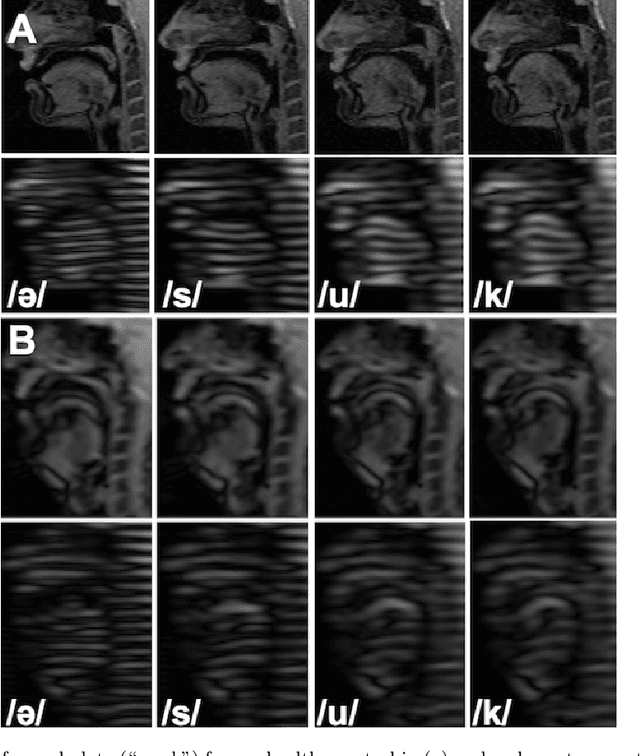Speech Map: A Statistical Multimodal Atlas of 4D Tongue Motion During Speech from Tagged and Cine MR Images
Paper and Code
Sep 15, 2018



Quantitative measurement of functional and anatomical traits of 4D tongue motion in the course of speech or other lingual behaviors remains a major challenge in scientific research and clinical applications. Here, we introduce a statistical multimodal atlas of 4D tongue motion using healthy subjects, which enables a combined quantitative characterization of tongue motion in a reference anatomical configuration. This atlas framework, termed Speech Map, combines cine- and tagged-MRI in order to provide both the anatomic reference and motion information during speech. Our approach involves a series of steps including (1) construction of a common reference anatomical configuration from cine-MRI, (2) motion estimation from tagged-MRI, (3) transformation of the motion estimations to the reference anatomical configuration, and (4) computation of motion quantities such as Lagrangian strain. Using this framework, the anatomic configuration of the tongue appears motionless, while the motion fields and associated strain measurements change over the time course of speech. In addition, to form a succinct representation of the high-dimensional and complex motion fields, principal component analysis is carried out to characterize the central tendencies and variations of motion fields of our speech tasks. Our proposed method provides a platform to quantitatively and objectively explain the differences and variability of tongue motion by illuminating internal motion and strain that have so far been intractable. The findings are used to understand how tongue function for speech is limited by abnormal internal motion and strain in glossectomy patients.
 Add to Chrome
Add to Chrome Add to Firefox
Add to Firefox Add to Edge
Add to Edge